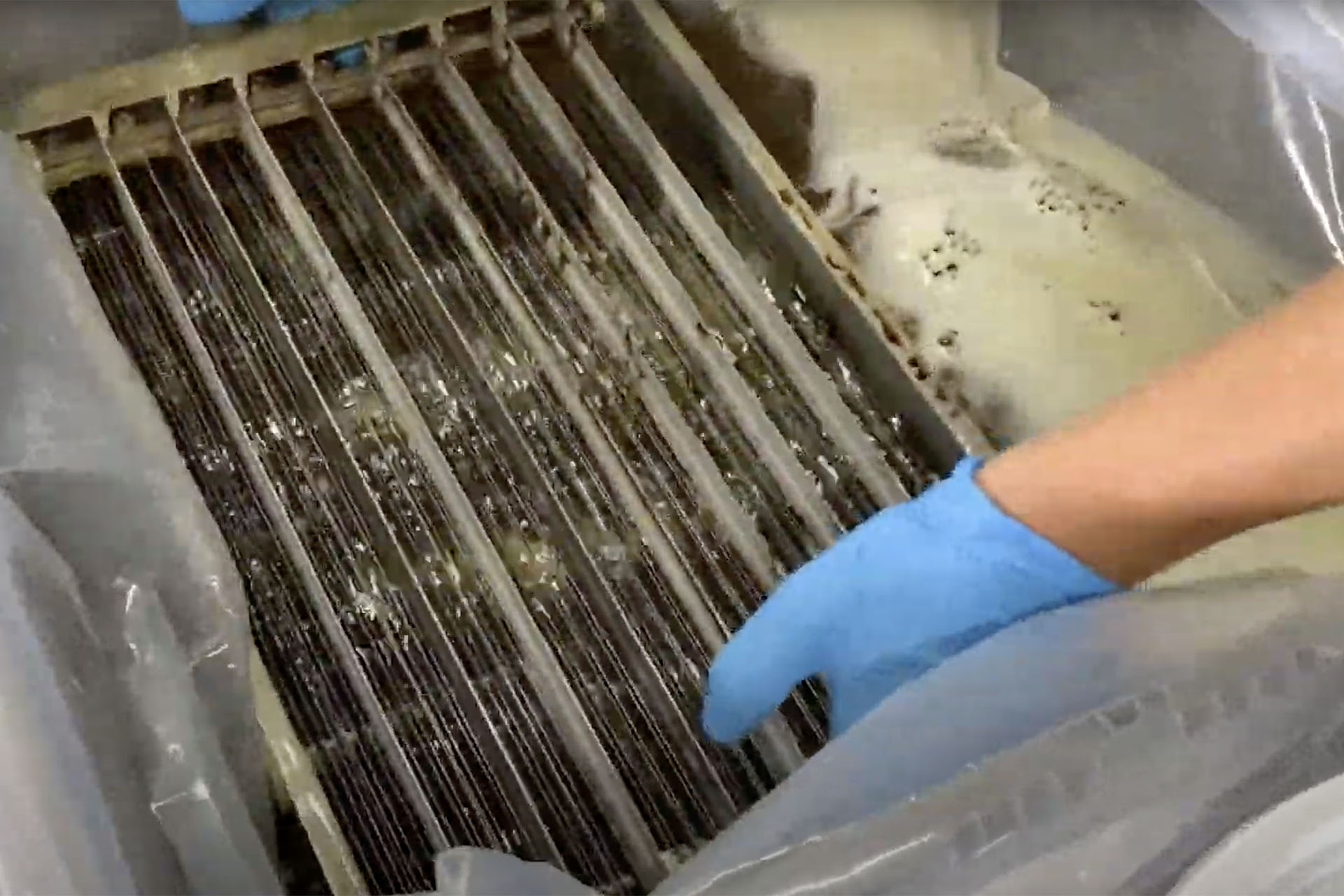
Cleaning Cells – Avoid These Mistakes – Electrostatic Mistbuster & Trimist Units
Tips for Cleaning Cells
There comes a time where your equipment is running smoothly and then all of a sudden everything comes to a standstill. Cleaning cells in sources capture equipment on a CNC machine is crucial to reducing machine downtime.
- Soak the cells using a non-etching soap that will not degrade the aluminum. Cell Soak 2000 is formulated to clean cell without corroding the aluminum. The ratio is usually 3 parts water to one part cleaning solution.
- Water Temperature – This is very important because any temperature in excess of 140 degrees will warp the fins when cleaning cells – warped fins will touch one another and ground out when charged. WATER TEMP SHOULD NEVER EXCEED 140 DEGREES.
- Cleaning Duration. Let the cells soak completely submerged for 25 minutes in the cleaning container. Before removing the cell there most likely will be an oil layer on the surface of the water. Skim this off if possible because as you pull out the cell, the oil will re-congeal on the fins. Remove and immediately wash off with hot water – typically a pressure washer will work to remove the oil – but don’t use too much water pressure because that will bend the fins.
- Contact Plates: On the right side of the cell is a white or red contact plate made from plastic / PVC material (electrically insulated) with smaller metal contact points. These metal plates come into contact with an opposite contact plate on the machine side. These metal plates can become corroded over time and need to be cleaned. Unlike the fins on the cell, these plates can be cleaned with a small brush if corroded. TIP- many times the arcing on a cell can occur between these metal connectors causing the cell to arc – or the indicator light to blink. Make sure these are clean – replace if corroded. You can use Simple Green to clean these. Make sure the machine is off when cleaning the machine side contact plates.
- Set cells to dry before re-inserting them. Typically 20 minutes. They do not have to be completely dry and they make arc for a minute or two after being re-inserted
- Check the ionizer wires, make sure that none are broken; replace if broken, see part # below. Check fins to make sure the broken ionizer wire is completed removed from the cell assembly.
Cleaning Solution: Cell Soak 2000 |
Replacement Parts: Mistbuster Ionizer Wires Tri-Mist Ionizer Wires |
Schedule in Routine Maintenance
The key to easy maintenance is routine maintenance. Keep an eye on those indicator lights – BLINKING Lights = Problem. Indicator Lights that are off means that there is even bigger issues at hand. Refer to my BLOG titled “Blinking Indicator Light”
- There are as many as 64 thin fins in your typical Trimist or Mistbuster collection cell; in addition to ionizer wires. Over months of use, the oil that accumulates on the fins will thicken until there is a buildup of thick oil / sludge between the fins. This oil/grease/sludge globule will conduct electricity between the two adjoining plates and cause the cell to ground out.
- A good analogy is bacon grease on a cooled frying pan. – Now imagine 64 thin frying pan fins that are closely aligned. You cannot clean the surface of the plates with any type of tool or brush because you cannot press down or scrub them hard like you can when cleaning bacon grease off the frying pan.
- There are typically 3 or 4 cells per unit, and a new Mistbuster cell costs approximately $400 new. Planned routine maintenance will ensure that these work as designed, and clean easily.
- Maintenance Schedule Guideline:
A shop that is running 24/7 5 days per week = Clean the cells every 3 or 4 months.
A shop that is running 1st shift only 5 days per week = Clean the cells every 6 months.
Click the button below to order the Cell Soak 2000. If your cells are just dirty maybe try our Cell Cleaning Program!
asc2863
